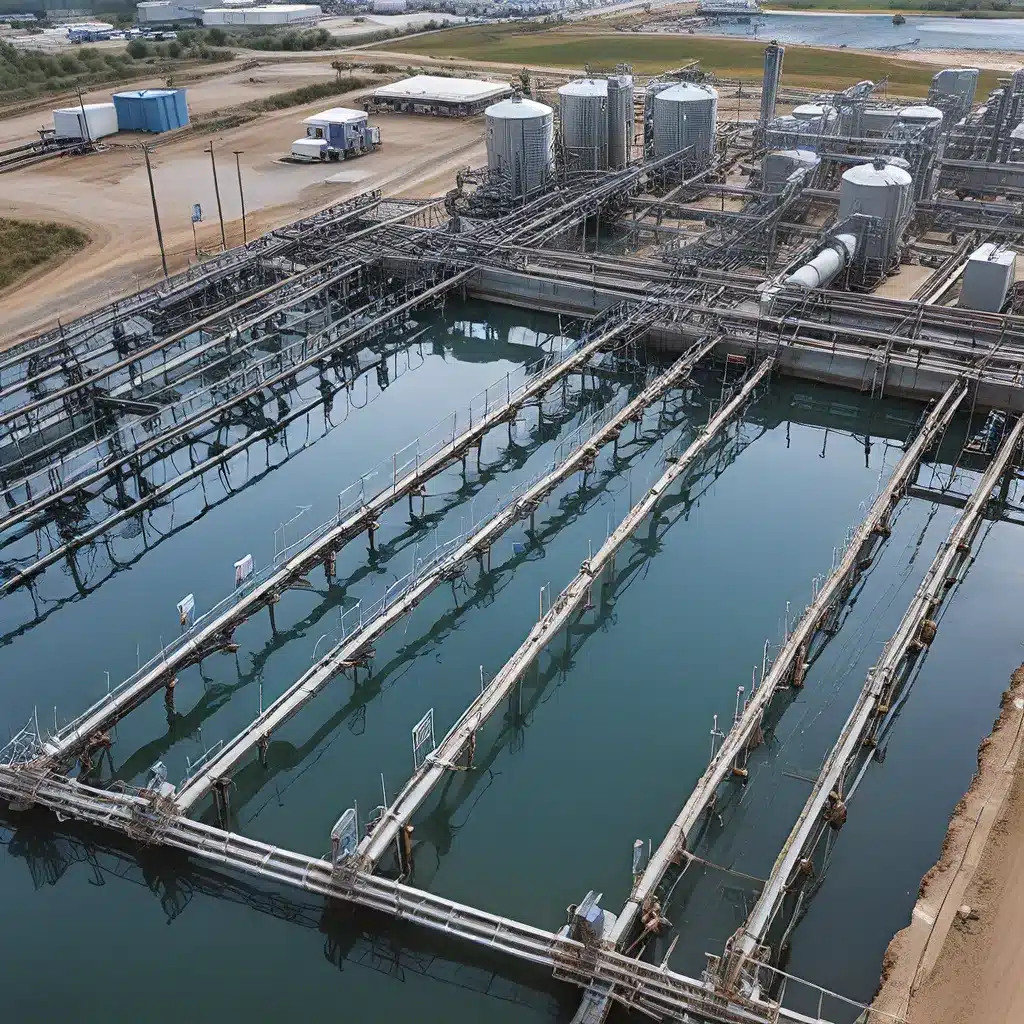
As an environmental enthusiast and a self-proclaimed water connoisseur, I’ve always been fascinated by the intricate world of water treatment processes. It’s amazing how we can take raw, often contaminated water and transform it into the clean, refreshing liquid that sustains our daily lives. But what if I told you that we can take this process to the next level through the power of data-driven decision making?
Harnessing the Power of Data
In recent years, the water treatment industry has undergone a remarkable transformation, thanks to the rise of advanced data analytics and artificial intelligence (AI) technologies. Researchers have discovered that by leveraging the wealth of data generated throughout the water treatment process, utilities can optimize their operations, improve efficiency, and ultimately deliver higher-quality water to their customers.
Just imagine the sheer volume of data points we’re talking about here – everything from water quality parameters, equipment performance, energy consumption, to weather patterns and beyond. When analyzed and interpreted correctly, this data can unlock a treasure trove of insights that can revolutionize the way we approach water treatment.
The Rise of AI-Powered Water Management
One of the most exciting developments in this space is the integration of artificial intelligence into water management systems. AI-powered systems can process vast amounts of real-time data, identify patterns and anomalies, and make intelligent decisions to optimize various aspects of the water treatment process.
Imagine a water treatment plant that can automatically adjust its chemical dosing based on fluctuating raw water quality. Or a distribution system that can proactively detect and address leaks before they cause major disruptions. These are just a few examples of how AI is transforming the way we manage our water resources.
Predictive Analytics and Preventative Maintenance
But the benefits of data-driven decision making don’t stop there. Predictive analytics, for instance, can help water utilities anticipate equipment failures, plan for maintenance, and prevent costly breakdowns. By analyzing historical data on equipment performance, age, and maintenance records, AI-powered systems can predict when a piece of equipment is likely to fail and recommend proactive steps to address the issue.
This not only helps extend the lifespan of critical infrastructure but also ensures that water treatment processes run smoothly and without interruption. Imagine the peace of mind that comes with knowing that your water treatment plant is operating at peak efficiency, thanks to the power of predictive analytics.
Optimizing Chemical Dosing and Energy Consumption
Another area where data-driven decision making can make a significant impact is in the optimization of chemical dosing and energy consumption. Water treatment facilities often struggle to find the perfect balance between the amount of chemicals used, the energy required to power the process, and the desired water quality.
By analyzing real-time data on water quality parameters, chemical concentrations, and energy usage, AI-powered systems can identify the most efficient dosing levels and operational settings to achieve the desired water quality while minimizing energy consumption and chemical costs. This not only reduces the environmental impact of the water treatment process but also leads to significant cost savings for the utility.
Enhancing Resilience in the Face of Emerging Challenges
As the world grapples with the effects of climate change, water scarcity, and emerging contaminants, the need for resilient and adaptable water treatment systems has never been more pressing. At Inland Waters, Inc., we believe that data-driven decision making is the key to building water treatment processes that can withstand these challenges and continue to deliver high-quality water to our communities.
By continuously monitoring water quality, tracking the performance of our treatment processes, and analyzing the impact of environmental factors, we can quickly identify emerging threats and implement proactive measures to address them. Whether it’s adapting to changes in raw water quality, addressing the presence of new contaminants, or optimizing energy usage during periods of drought, data-driven decision making gives us the agility and resilience we need to stay ahead of the curve.
Fostering a Culture of Continuous Improvement
Of course, the journey to becoming a truly data-driven water treatment organization doesn’t happen overnight. It requires a cultural shift within the organization, where data is valued, analyzed, and used to drive decision-making at every level.
This means investing in the right technologies, training our teams to work with data, and fostering a mindset of continuous improvement. It’s about embracing the idea that there’s always room for optimization, that we can never be complacent, and that the key to unlocking the full potential of our water treatment processes lies in the data that we collect and the insights we derive from it.
Conclusion: The Future of Water Treatment is Data-Driven
As I look to the future of water treatment, I can’t help but feel both excited and optimistic. The integration of data-driven decision making and advanced technologies like AI has the power to transform the way we manage our water resources, making our treatment processes more efficient, more resilient, and more sustainable than ever before.
But the real magic happens when we combine this technological prowess with the passion and expertise of the people who work in the water treatment industry. By empowering our teams with the tools and insights they need to make data-driven decisions, we can unlock a new era of water management that is both innovative and responsive to the evolving needs of our communities.
So, let’s embrace this data-driven revolution and embark on a journey of continuous improvement, always striving to optimize our water treatment processes and deliver the highest-quality water to the people we serve. After all, the future of our water supply depends on it.


